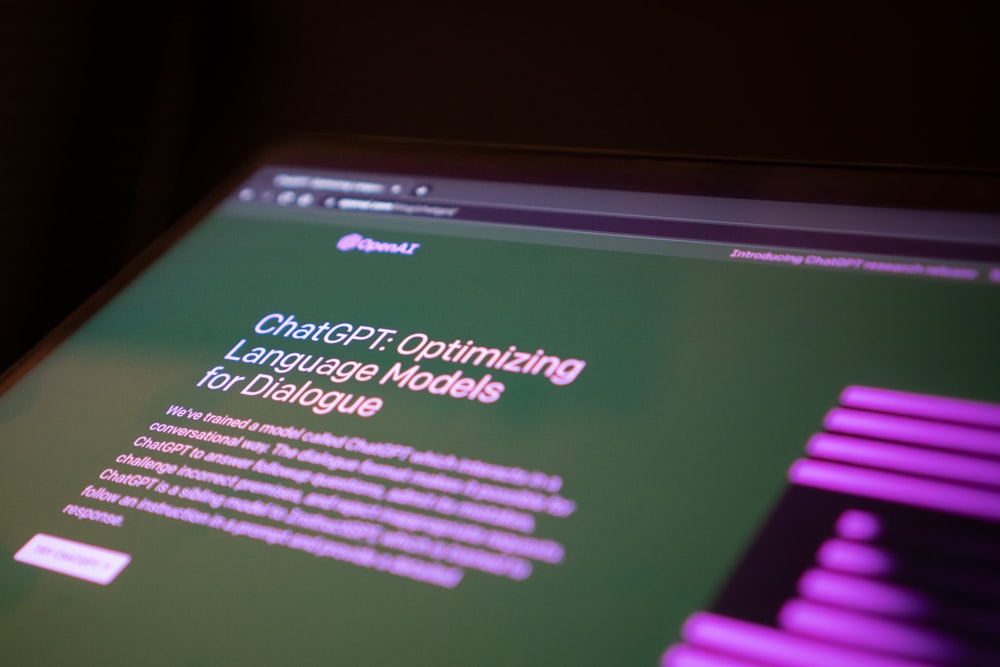Request a demo specialized to your need.
ChatGPT: The Future of Pharmacovigilance
Pharmacovigilance plays a critical role in monitoring drug safety post-approval. With the emergence of new technologies, there has been a growing interest in how they can revolutionize the field. One such technology is ChatGPT, an AI-powered chatbot developed by OpenAI that has the potential to transform pharmacovigilance.
What is ChatGPT?
ChatGPT is an AI-powered chatbot developed by OpenAI, which has the ability to generate human-like text based on input data. This technology has the potential to revolutionize various industries, including pharmacovigilance. This chatbot can be integrated into existing systems to automate various tasks and make the process more efficient.
Leveraging ChatGPT in Pharmacovigilance
With the advent of new technology, ChatGPT is expected to revolutionize the field of pharmacovigilance in the following ways:
ONE – Streamlining adverse event reporting: ChatGPT can help automate the process of adverse event reporting by automating data collection and categorization, reducing the time and resources required for manual reporting.
TWO – Improved data analysis: ChatGPT’s advanced natural language processing and machine learning capabilities allow for more accurate and comprehensive analysis of pharmacovigilance data, resulting in an improved understanding of drug safety issues.
THREE – Early detection of adverse events: By monitoring large amounts of data from multiple sources in real-time, ChatGPT can help identify adverse events more quickly and accurately, enabling early detection and prevention of safety issues.
FOUR – Better triage and prioritization: ChatGPT can assist pharmacovigilance professionals in prioritizing adverse event cases based on the severity and potential impact of the event, enabling quicker and more effective response times.
FIVE – Automation of routine tasks: ChatGPT can automate routine tasks such as data entry, data cleaning, and report generation, freeing up time for pharmacovigilance professionals to focus on more complex tasks.
SIX – Enhanced collaboration: ChatGPT can facilitate collaboration between pharmacovigilance professionals, researchers, and regulatory agencies, improving communication and coordination in the field.
SEVEN – Improved communication with patients: The AI chatbot can help pharmacovigilance professionals communicate more effectively with patients by providing answers to frequently asked questions and assisting with patient education.
EIGHT – Predictive analytics: The AI Tool’s ability to analyze large amounts of data and identify patterns can be used to develop predictive models that can forecast the likelihood of adverse events, enabling proactive prevention and mitigation efforts.
NINE – Real-time surveillance: The AI Tool’s ability to monitor data in real-time can help detect safety issues more quickly and accurately, enabling rapid response and mitigation efforts.
TEN – Increased efficiency and accuracy: By automating routine tasks and improving data analysis and communication, ChatGPT has the potential to significantly increase the efficiency and accuracy of pharmacovigilance activities, improving patient safety and overall public health outcomes.
Limitations
While ChatGPT has the potential to revolutionize pharmacovigilance, its limitations must also be considered. As an AI language model, it may not understand the nuances of medical terminology or the complexities of human physiology.
Conclusion
In conclusion, ChatGPT has the potential to revolutionize the field of Pharmacovigilance if used wisely. Automation is the way forward in this field as it is important to latest technology to improve accuracy, speed, and efficiency of adverse event reporting and analysis. As it is expected to improve understanding of drug safety issues and better patient outcomes.
However, this AI tool may come with its limitation. As a matter of fact Pharmacovigilance involves medical assessments, ChatGPT is just a language model and the level to which it can perform data analysis depends on the level it’s getting trained with all the medical nuances. The reason of this limitation is solely attributed to the fact an AI tool is not a medical expert and may not understand the nuances of medical terminology or the complexities of human physiology.
Cloudbyz Safety and Pharmacovigilance (PV) software is a cloud-based solution built natively on the Salesforce platform. It offers 360 degree view across R&D and commercial. It also enables pharma, bio-tech and medical devices companies to make faster and better safety decisions. It helps optimizing global pharmacovigilance compliance along with easy to integrate risk management feature. Cloudbyz pharmacovigilance software solution easily integrates the required data over a centralized cloud-based platform for advanced analytics set-up along with data integrity. It empowers the end-user with proactive pharmacovigilance, smart features with data-backed predictability, scalability and cost-effective support.
To know more about Cloudbyz safety & pharmacovigilance contact info@cloudbyz.com
Subscribe to our Newsletter


